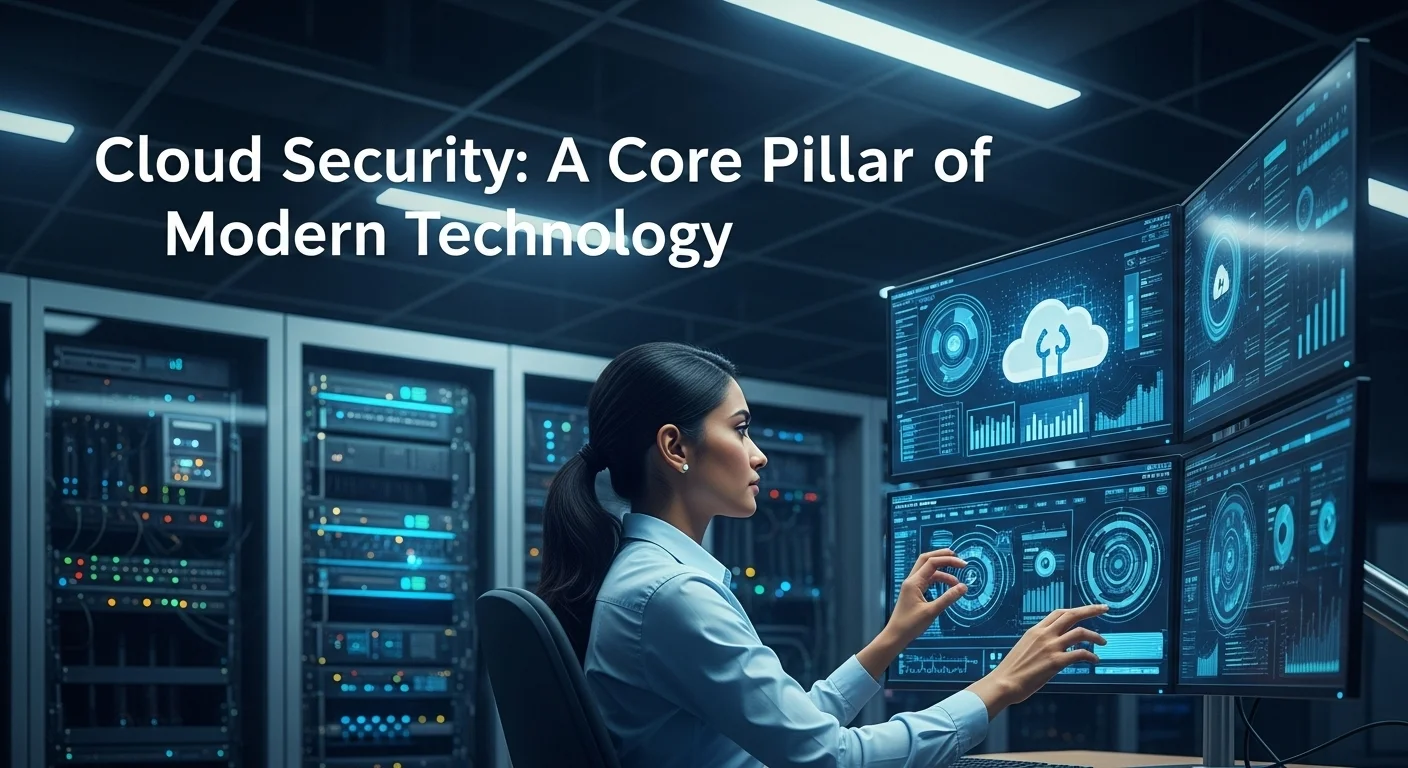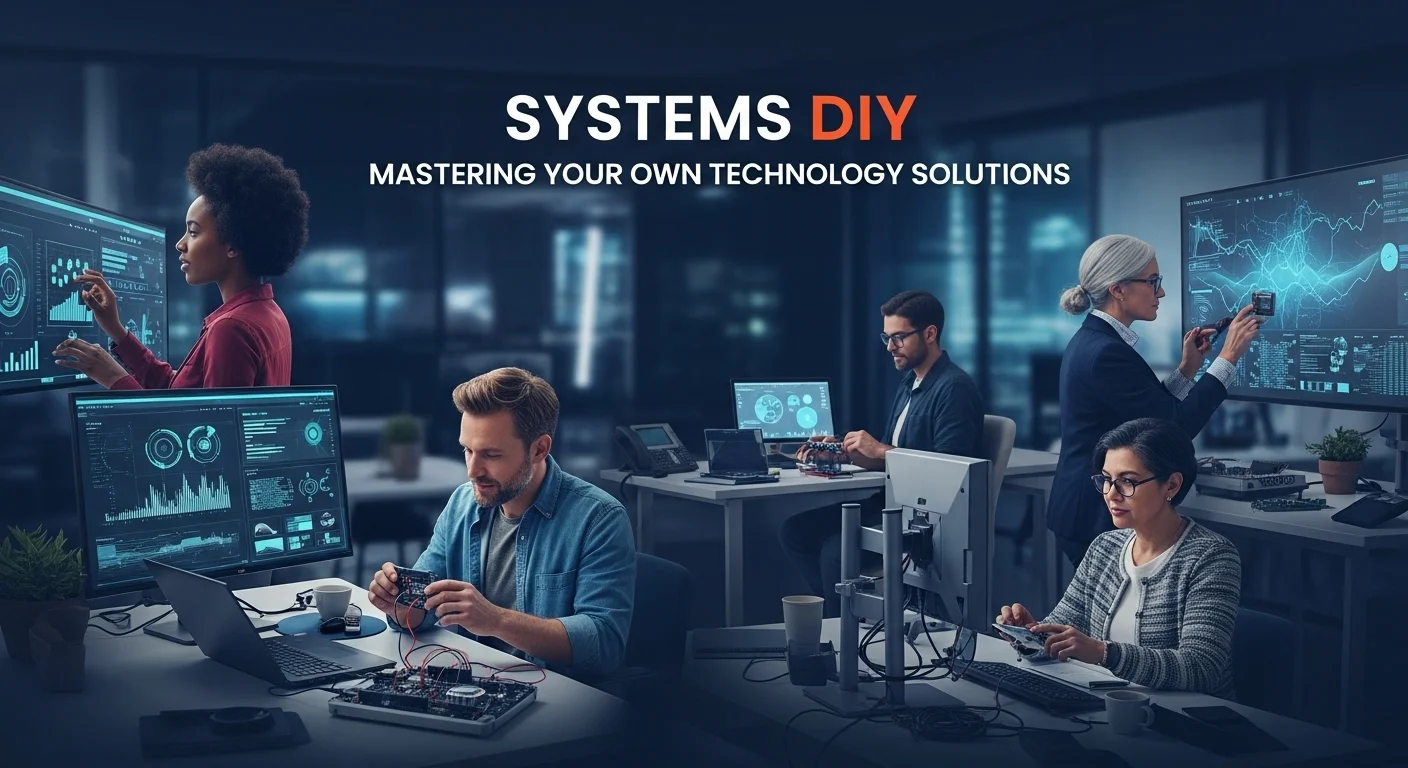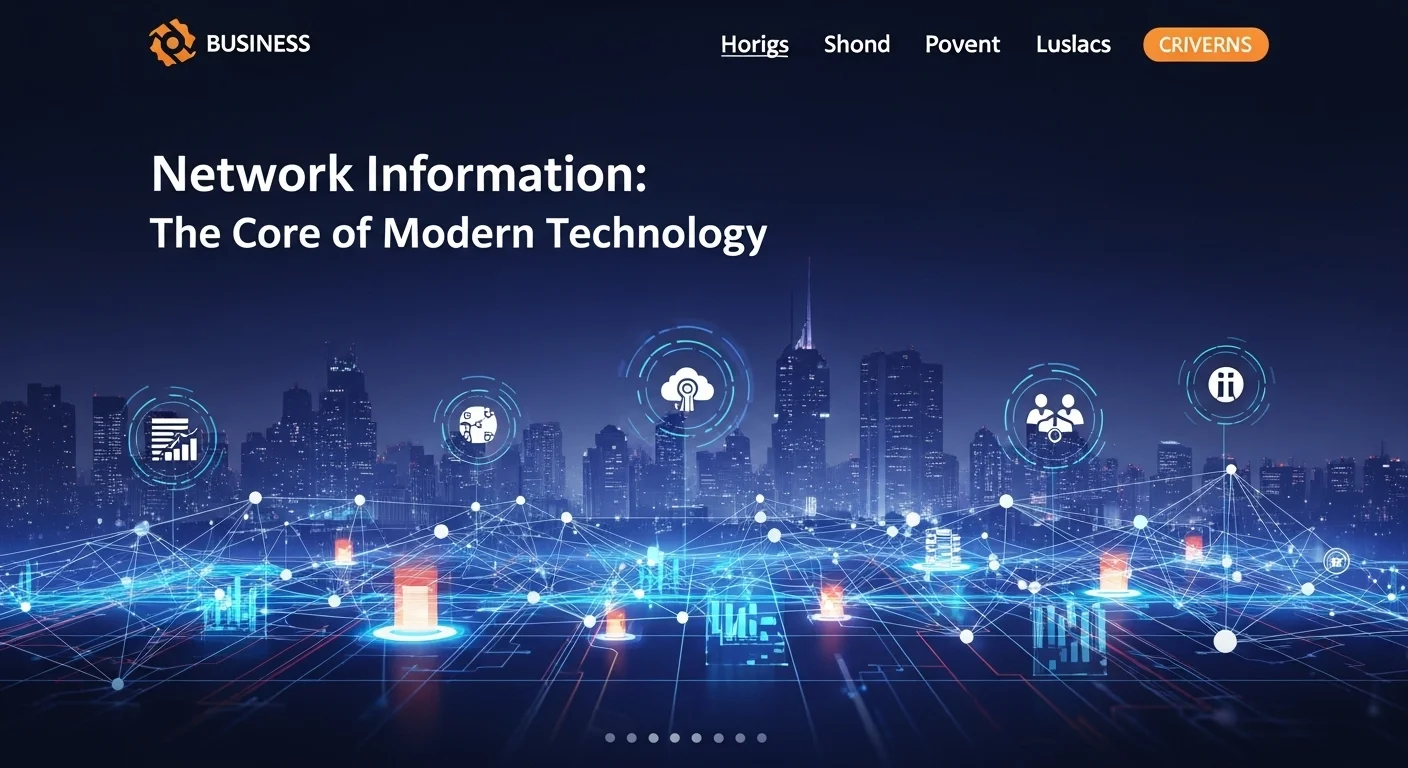A Personal Guide to Cloud Security: Protecting Your Business in the Digital Sky

Executive Summary
In my years as a security strategist, I've seen countless businesses make the leap to the cloud. It's an exciting move, full of potential for growth and innovation. But it often comes with a nagging question: is our data truly safe up there? The truth is, cloud security can feel complex and intimidating. That's why I wrote this guide. It’s not just another technical document; it’s a conversation about how to secure your corner of the cloud. We'll cut through the jargon and talk about what really matters, from the basic principles to the powerful tools offered by giants like Amazon Web Services and specialists like Wiz and Akamai. You'll learn how to protect your data, understand your role in the security partnership with cloud providers, and discover the services that can make your life easier. Think of me as your personal guide to navigating the complexities of cloud security with confidence.
Table of Contents
What is Cloud Security and why is it important in Technology?
In today's world, using the cloud is no longer a choice—it's how modern business gets done. I’ve seen companies of all sizes transform their operations by embracing the cloud's power. But with this great power comes a great responsibility: keeping everything secure. So, what is Cloud Security? Simply put, it's the collection of practices, tools, and policies we use to protect our data, applications, and infrastructure in the cloud. Think of it as the digital security guard, the alarm system, and the reinforced vaults for your online assets. Its importance has exploded because a single security slip-up can lead to disastrous consequences—from hefty financial losses to a loss of customer trust that can take years to rebuild. In my experience, treating cloud security as a core business function, not just an IT task, is the first step toward building a resilient company.
The Building Blocks of a Secure Cloud
To really get a handle on cloud security, you need to understand what you're protecting and from what. Cloud environments are different from the old server rooms we used to manage. They're vast, interconnected, and accessible from anywhere, which is great for business but also creates more opportunities for attackers. An effective security plan rests on a few key pillars:
- Data Security: This is the heart of it all. Your primary mission is to protect your data, whether it's sitting on a server (at rest) or moving between services (in transit). This means using strong encryption, having systems to prevent data from being accidentally leaked (Data Loss Prevention), and tightly controlling who can access it. When I talk about cloud data security, this is the fortress we're building.
- Identity and Access Management (IAM): This is about managing who gets the keys to your kingdom. IAM ensures that only the right people and services can access your resources. I always preach the 'principle of least privilege'—give users only the minimum access they need to do their job. It's a simple concept that dramatically reduces your risk.
- Threat Intelligence and Prevention: This is the proactive side of security. It's about using tools like firewalls and intrusion detection systems to spot and block threats before they can do any damage. It's like having a lookout who knows what trouble looks like and can stop it at the gates.
- Compliance and Governance: Many of us operate in industries with strict rules about data protection, like GDPR or HIPAA. Your cloud security strategy must ensure you're following these rules, which often means continuous checks and audits to prove you're compliant.
The Shared Responsibility Model: A Crucial Handshake
One of the most common points of confusion I see is the 'Shared Responsibility Model'. It's a fundamental concept you have to understand. Think of it like renting a secure storage unit. The facility owner (the cloud provider, like AWS) is responsible for the security *of* the facility—the gates, the guards, the building itself. This is their 'security *of* the cloud'. However, you, the renter, are responsible for what you put inside your unit and for locking your own padlock. This is your 'security *in* the cloud'. So, with amazon cloud security, AWS handles the massive global infrastructure, but you are responsible for configuring your firewalls, managing user access, and encrypting your data. Believing the provider does it all is a mistake that can leave you wide open.
The Role of Specialized Security Tools
While cloud providers give you a great set of security tools, the reality of modern IT—often involving multiple clouds and complex applications—means you sometimes need more specialized help. This is where companies like Wiz and Akamai come in. I’ve seen them make a huge difference for security teams.
Wiz cloud security platforms have been a game-changer. They offer an agentless way to scan your entire cloud environment and connect all the dots. Wiz doesn't just tell you there's a vulnerability; it shows you how that vulnerability, combined with a network exposure and a permissive identity, creates a direct path for an attacker to reach your most critical data. This ability to see the full 'attack path' helps teams focus on fixing the problems that truly matter.
On the other hand, Akamai cloud security specializes in protecting you at the 'edge'—the boundary between the internet and your applications. Their massive global network acts as a shield, stopping DDoS attacks and filtering out malicious web traffic before it even gets close to your servers. This edge protection is a critical layer in any serious defense strategy, freeing up your internal systems to deal with more targeted threats.
The Growing Need for Cloud Security Services
Let's be honest: managing all of this is a huge job. Many companies, especially smaller ones, don't have a dedicated team of security experts. This has led to a boom in cloud security services. These can range from one-off security assessments to fully managed services where a team of experts monitors your environment 24/7. In my view, leveraging these cloud security services is a smart move. It gives you access to top-tier expertise and technology at a fraction of the cost of building it all yourself. As we rely more on the cloud, the value of having an expert partner to guide you will only increase, making it one of the smartest investments a business can make.

Complete guide to Cloud Security in Technology and Business Solutions
Alright, now that we've covered the 'what' and 'why,' let's roll up our sleeves and get into the 'how.' Building a truly secure cloud environment isn't just about theory; it's about practical application and smart strategy. As your business dives deeper into the cloud, your security approach needs to mature right alongside it. This part of our guide is a deep dive into the specific methods and business solutions that create a tough, compliant, and resilient cloud posture. I'll walk you through everything from managing who has access to locking down your data and network. Mastering these elements is how you confidently unlock the cloud's full potential without taking on unnecessary risks.
Technical Methods for a Secure Cloud Foundation
A strong cloud security strategy is built on solid technical controls. These are the nuts and bolts—the actual settings and tools you use to protect your environment. The big cloud providers like AWS give you a fantastic toolbox, but the tools are only as good as the person using them.
1. Identity and Access Management (IAM)
I always say that IAM is your first and most important line of defense. It's the bouncer at the door of your cloud. A good IAM strategy includes:
- Principle of Least Privilege: I can't stress this enough. Only grant the absolute minimum access required. If a user or service doesn't need to touch something, don't give them the permission to. It’s that simple.
- Multi-Factor Authentication (MFA): Make MFA mandatory for everyone, especially administrators. It's one of the single most effective controls for stopping account takeovers.
- Role-Based Access Control (RBAC): Don't assign permissions to individual users. Create roles like 'Developer' or 'Auditor' with pre-defined permissions. It’s cleaner, easier to manage, and far less prone to error. With amazon cloud security, using IAM roles is a powerful way to let services securely talk to each other without having to store secret keys in your code.
2. Network Security and Segmentation
Even though your cloud network is virtual, the security principles are very real. The goal is to isolate your resources to stop an attacker from moving around freely if they do get inside.
- Virtual Private Clouds (VPCs): Use VPCs to carve out your own private, isolated section of the cloud. Within your VPC, use public subnets for things that need to face the internet (like a web server) and private subnets for everything else (like your databases).
- Security Groups and Network ACLs: These are your virtual firewalls. Think of them as traffic cops for your network, controlling exactly what can come in and what can go out. Getting these rules right is essential.
- Web Application Firewalls (WAF) & DDoS Mitigation: If you have an application open to the public, a WAF is non-negotiable. It protects you from common hacks. This is a huge strength of akamai cloud security, which filters this bad traffic out at the edge. DDoS protection ensures your service stays online even when under attack.
3. Advanced Cloud Data Security
At the end of the day, it's all about the data. A layered cloud data security strategy is key.
- Encrypt Everything: Your data should be encrypted when it's stored and when it's moving. Use provider services like AWS Key Management Service (KMS) to manage your encryption keys. It’s easier than you think.
- Data Loss Prevention (DLP): Use tools that can automatically identify sensitive data like credit card numbers and prevent them from being sent outside your secure environment.
- Database Security: Lock down your databases. They should almost never be accessible directly from the internet. Use built-in security features and audit who is accessing them regularly.
Business Techniques and Strategic Implementation
Great technology isn't enough if your people and processes aren't on board. Security needs to be woven into the fabric of your business.
1. Cloud Security Posture Management (CSPM)
Cloud environments are too big and change too fast to monitor by hand. CSPM tools automate this for you. This is where a solution like wiz cloud security is incredibly powerful. From my experience, using a platform like Wiz is like having a superhero's vision. It scans your entire cloud and gives you a single, unified view of all your risks. It doesn't just find individual problems; it shows you how they connect to create dangerous attack paths. This lets your team ignore the noise and focus on fixing the critical issues that could actually lead to a breach. This proactive, risk-based approach is a total game-changer.
2. DevSecOps: Shifting Security Left
DevSecOps is a cultural shift. It means making security everyone's job, especially developers, from the very beginning of a project ('shifting left'). This includes training developers, automatically scanning code for bugs, and checking infrastructure code for misconfigurations before anything even goes live.
3. Choosing the Right Cloud Security Services
The market for cloud security services is huge. The right choice depends on your needs and resources. Some key services to consider are:
- Penetration Testing: Hire ethical hackers to attack your systems and find the weak spots before the bad guys do.
- Managed Detection and Response (MDR): Outsource your 24/7 security monitoring to a team of experts. It's like having your own elite security operations center for a fraction of the cost.
- Compliance as a Service: Work with specialists who can help you navigate the complex requirements of regulations like HIPAA or PCI DSS in the cloud.
Comparing Major Platforms and Solutions
People often compare AWS, Azure, and GCP on price or features, but their security offerings are just as important. Amazon cloud security has a mature and incredibly broad set of tools for almost any task. However, a smart business strategy recognizes that even the best native tools have blind spots, especially when you use more than one cloud. That’s why third-party platforms are so valuable. A solution like Akamai cloud security offers world-class edge protection that works with any cloud. A tool like Wiz gives you a single view of risk across all your clouds, something the providers can't do themselves. In my professional opinion, the best strategy is a hybrid one: master the tools your cloud provider gives you, and then fill the gaps with best-in-class specialized solutions. This layered approach creates a security posture that is not just strong, but truly resilient.

Tips and Strategies for Cloud Security to improve your Technology experience
Getting a handle on cloud security isn't a one-and-done project; it’s a continuous journey. As technology changes, so do the threats, and our defenses must evolve too. Now that we've covered the foundations, let's talk about the practical tips and strategic thinking that can take your security from being just 'good enough' to a real business advantage. I've seen firsthand how a mature security program doesn't just stop bad things from happening—it enables faster innovation and builds deep trust with your customers. It’s about creating a culture of security and using smart automation to stay ahead of the game. Here, I'll share some actionable strategies to help you build a security program that lasts.
Best Practices for a Resilient Cloud Security Program
These best practices are the operational habits that form the backbone of a strong, sustainable security posture. They're less about specific tools and more about how your organization thinks and acts.
- Build a Security-Aware Culture: Your people can be your strongest defense or your weakest link. Regular, engaging training on topics like phishing and data handling is essential. More importantly, you want to create an environment where an employee who spots something suspicious feels comfortable reporting it immediately, without fear of blame. That's a powerful asset.
- Adopt a Zero Trust Mindset: The old idea of a secure perimeter with a 'trusted' network inside is dead in the cloud. A Zero Trust model works on a simple, powerful principle: 'never trust, always verify.' It means every person and device must prove their identity to access any resource, every single time. It sounds strict, but it dramatically limits an attacker's ability to move around if they breach your defenses.
- Create and Rehearse an Incident Response (IR) Plan: I always tell my clients it’s not a question of *if* you'll have a security incident, but *when*. Having a clear, well-documented plan for that moment is critical. It should detail who does what, how you communicate, and the steps to contain and recover. And you must practice it! Running drills ensures that when a real crisis hits, your team can act swiftly and effectively.
- Automate Relentlessly: You can't manually manage security at the speed of the cloud. Automate everything you can: security checks in your development pipeline, patching vulnerabilities, and compliance monitoring. Automation reduces mistakes, enforces consistency, and frees up your valuable security experts to focus on more complex challenges like threat hunting.
Leveraging Advanced Tools and Business Strategies
To outsmart today's attackers, you need tools that provide deep intelligence and a strategy that embeds security into your business operations.
Optimizing with a Cloud Native Application Protection Platform (CNAPP)
The security industry has evolved towards CNAPPs, which bundle several key security functions into one platform. This is where wiz cloud security has really made a name for itself. A CNAPP like Wiz gives security teams a single, unified view of risk across their entire cloud. For example, the wiz cloud security platform doesn't just list a thousand separate alerts. Instead, it might show you that a public-facing server has a critical vulnerability, overly permissive access rights, and a direct network path to your customer database. By connecting these dots, it shows you the real, high-priority attack paths. This helps teams cut through the noise and fix the 1% of issues that pose 99% of the risk. From my experience, this level of prioritized insight is invaluable.
Strengthening the Edge with a Global Platform
Your security is only as strong as its most exposed point. That's why edge security is so vital. A service like akamai cloud security creates a powerful defensive shield between your applications and the open internet. Akamai's global network can absorb massive DDoS attacks and its Web Application Firewall (WAF) can block sophisticated attacks before they ever reach your infrastructure. By handing off this first line of defense to a specialist, your team can focus its efforts on protecting your core infrastructure and data, which is the ultimate goal of any cloud data security program.
Choosing the Right Mix of Cloud Security Services
No single organization can be an expert in all things security. The smartest companies I know build a program that blends their in-house team with specialized external cloud security services. This might include:
- Threat Hunting Services: Hiring experts to proactively search your environment for advanced threats that your automated tools might miss.
- Digital Forensics and Incident Response (DFIR): Having a specialized firm on retainer so that if a major breach occurs, you have immediate access to experts who can help you investigate, contain, and recover.
- Strategic Security Consulting: Partnering with advisors to build a long-term security roadmap that aligns with your business goals.
Real-World Application and External Resources
Let's put this all together. Imagine a retail company preparing for the holiday season. They'd use amazon cloud security tools for basic compliance and encryption. They would layer on wiz cloud security to get a continuous view of their risk posture and quickly fix any critical misconfigurations. At the edge, they'd use akamai cloud security to protect their website from being taken down by attacks and to ensure customer transactions are secure. Finally, they might hire a cloud security services provider to conduct penetration tests and provide 24/7 monitoring during their peak season. This multi-layered approach is what a mature security program looks like in action.
To keep learning, I highly recommend exploring high-quality resources. A fantastic place to start is the AWS Whitepapers & Guides page. [18] It’s a rich library of expert-written technical guides and best practices. These documents offer deep dives into specific challenges and provide vendor-approved advice for building secure systems on the world's leading cloud platform. By combining the practical strategies we've discussed with continuous learning from trusted sources, you can dramatically improve your security and build a truly resilient business in the cloud.
Expert Reviews & Testimonials
Sarah Johnson, Business Owner ⭐⭐⭐
The information on Cloud Security is solid, but I'd love to see more real-world examples specifically for small business owners like myself.
Mike Chen, IT Consultant ⭐⭐⭐⭐
A very helpful article on Cloud Security. It clarified a lot for me, though a few of the more technical concepts could have been broken down even further.
Emma Davis, Tech Expert ⭐⭐⭐⭐⭐
Fantastic article! Incredibly comprehensive guide to Cloud Security. It was perfect for my specialization studies, and I found it easy to understand.



